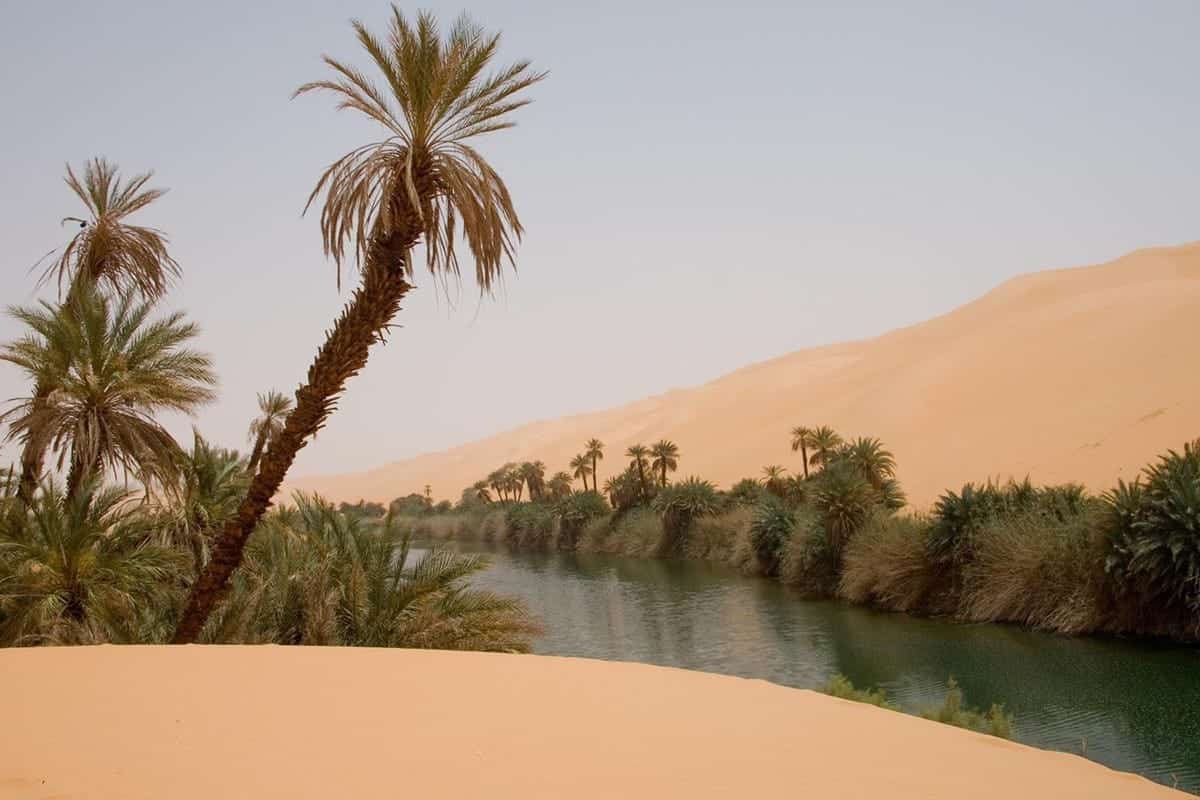The Desert Oases, In the heart of Egypt’s vast and arid landscapes lies a hidden treasure – the desert oases. Far from the bustling cityscapes and iconic pyramids, these serene oases stand as hubs of life, offering a unique and contrasting perspective of Egypt’s biodiversity. In this article, we will embark on a journey to explore the enchanting world of desert oases, discovering the thriving ecosystems that make these paradises in the sand.
In this article, we will uncover for you the Desert Oases with Top Ten Egypt
The Egyptian desert, with its vast stretches of golden sands, may evoke images of desolation and solitude. However, hidden within this seemingly inhospitable terrain are oasis jewels – vibrant, lush sanctuaries that defy the harshness of the arid landscape. In this exploration, we delve into the captivating world of Egypt’s desert oases, where life not only survives but thrives against the odds.
A Mirage of Life Amidst the Dunes:
Desert oases, often appearing as mirages in the distance, are testament to the resilience of life in extreme environments. These havens of greenery emerge from the earth’s depths, sustained by subterranean aquifers that transform arid expanses into flourishing landscapes. The oasis experience is not merely a visual spectacle; it is an immersion into an ecosystem where every element plays a vital role.
Prominent Desert Oases:
Siwa Oasis:
Located in the western desert, Siwa is a treasure trove of history and nature. Ancient olive groves dot the landscape, providing a stark contrast to the surrounding dunes. The Oracle Temple of Amun, with its enigmatic aura, adds a mystical touch to the oasis, making it a cultural and historical hub.
Bahariya Oasis:
Situated in the heart of the Black Desert, Bahariya is a fascinating blend of natural wonders and archaeological marvels. Hot springs beckon weary travelers, while the remnants of a Pharaonic past whisper stories of an ancient civilization. The Black Desert itself, with its surreal dark-hued sands, adds a unique aesthetic to the oasis.
Farafra Oasis:
Known for the ethereal White Desert, Farafra is a testament to the whimsical artistry of nature. Chalky rock formations, shaped by wind and time, create an otherworldly landscape. The oasis is also home to a tight-knit Bedouin community, adding a human touch to its mystical charm.
Flora and Fauna Flourishing Amidst Dunes:
Botanical Marvels:
The flora of desert oases is a testament to nature’s adaptability. Date palms, iconic symbols of oasis life, provide shade and sustenance to both flora and fauna. Tamarisk trees, with their resilient nature, prevent soil erosion, contributing to the oasis’s sustainability.
Diverse Fauna:
Contrary to the perception of deserts as barren lands, oases harbor a rich diversity of wildlife. Migratory birds, seeking refuge in these havens, include falcons, eagles, and various waterfowl. Reptiles like lizards and snakes navigate the dunes with grace, while mammals such as desert foxes and hedgehogs leave their imprints on the sandy canvas.
Cultural Elegance – Life in Oasis Communities:
Traditional Agriculture:
Life in oasis communities revolves around ingenious agricultural practices. Ancient irrigation techniques, passed down through generations, sustain crops in a region where water is a precious commodity. The agricultural landscape is complemented by the craftsmanship of the locals, who produce intricately woven textiles and pottery.
Festivals and Traditions:
Oasis communities celebrate their rich cultural heritage through vibrant festivals. The Siwa Festival, a lively showcase of music, dance, and ancient rituals, brings locals and visitors together. The Bahariya Date Festival, a colorful homage to the date harvest, offers a sensory journey through local delicacies and crafts.
Balancing Act – Conservation and Sustainable Tourism:
Environmental Challenges:
While desert oases are resilient, they face environmental challenges. Water scarcity remains a constant concern, with the delicate balance between agriculture and conservation requiring careful consideration. The impact of tourism on these fragile ecosystems is also a critical issue that demands attention.
Conservation Initiatives:
Efforts to preserve these oases are underway, with community-led projects aiming to involve locals in sustainable practices. Governmental regulations focus on responsible tourism, ensuring that the allure of the oases remains intact for future generations. It is a delicate balancing act between human exploration and environmental preservation.
As travelers embark on a journey with Top Ten Egypt Tours to explore the wonders of desert oases, they are invited into a world where life blossoms in the most unexpected places. Beyond the iconic pyramids and bustling cities, these oases stand as silent testaments to the beauty of nature’s resilience. Let each step through the sands be a discovery, each encounter with flora and fauna a moment of awe, and each interaction with local communities a celebration of the rich tapestry of life in Egypt’s d landscapes. In the heart of the desert, amidst the palms and beneath the stars, the oases beckon – hubs of life in the arid landscape, waiting to be explored.
Browse our complete list of Egypt tours Click Here



Comment (0)